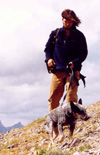 |
I was on sabbatical this year, so I spent from January-March as a visiting scientist collecting animals at the Smithsonian Marine Station in Fort Pierce, FL. It is a little different, working in a branch of the Smithsonian Museum, because the work is very individually focused and there are few students there. There are some staff scientists, visiting scientists and postdoctoral fellows, each of them working on a group of marine animals or plants. I was collecting and identifying tunicates, hemichordates and lancelets there, all important invertebrates to understand and study chordate origins. These invertebrates are closely related but have very different adult body plans. I was able to find some juvenile hemichordates there, which were the perfect age for our studies on gill bar development. The photo above is of the animals that I collected and photographed. This photo will be published soon in a chapter on chordate origins. Our research is showing that the hemichordate in A and lancelet in C are more similar in body plan than the tunicate shown in B, even though the tunicate and lancelet are more closely related to each other.
Aug. 23, 2006
Prof. Billie Swalla



 Together this dog and his trainer, Heath Smith, search for sign from grizzlies in Alberta, Canada. They are part of a novel and non-invasive animal tracking program started at the Center for Conservation Biology. This program is one of several at the department that conducts research to help save the lives of endangered species.
Every bit counts. Your choice to support the Department of Biology could make a big difference in how our future turns out.
Together this dog and his trainer, Heath Smith, search for sign from grizzlies in Alberta, Canada. They are part of a novel and non-invasive animal tracking program started at the Center for Conservation Biology. This program is one of several at the department that conducts research to help save the lives of endangered species.
Every bit counts. Your choice to support the Department of Biology could make a big difference in how our future turns out.